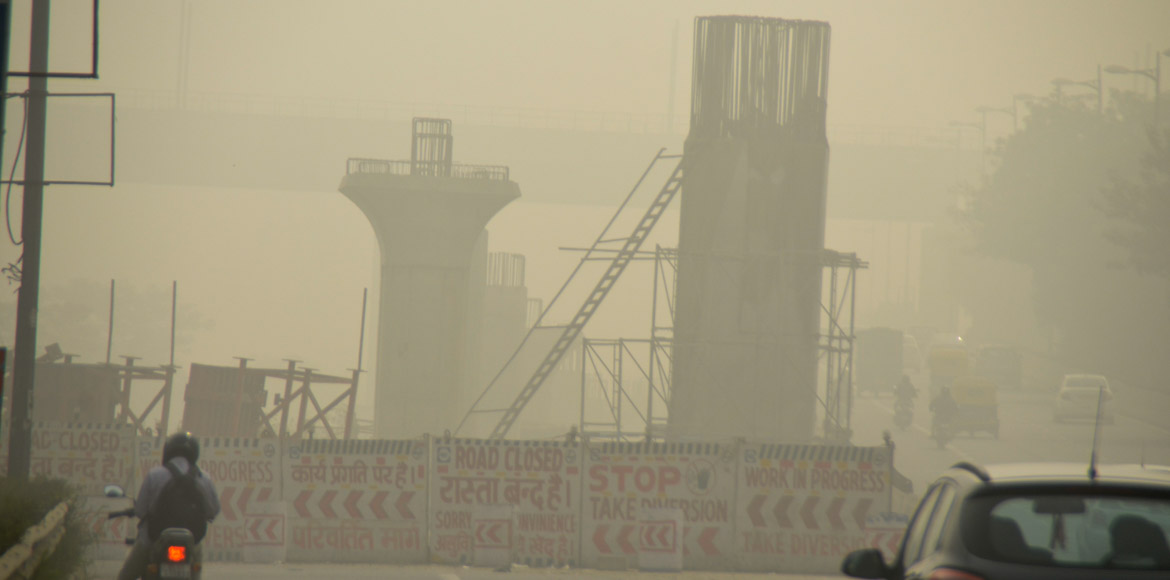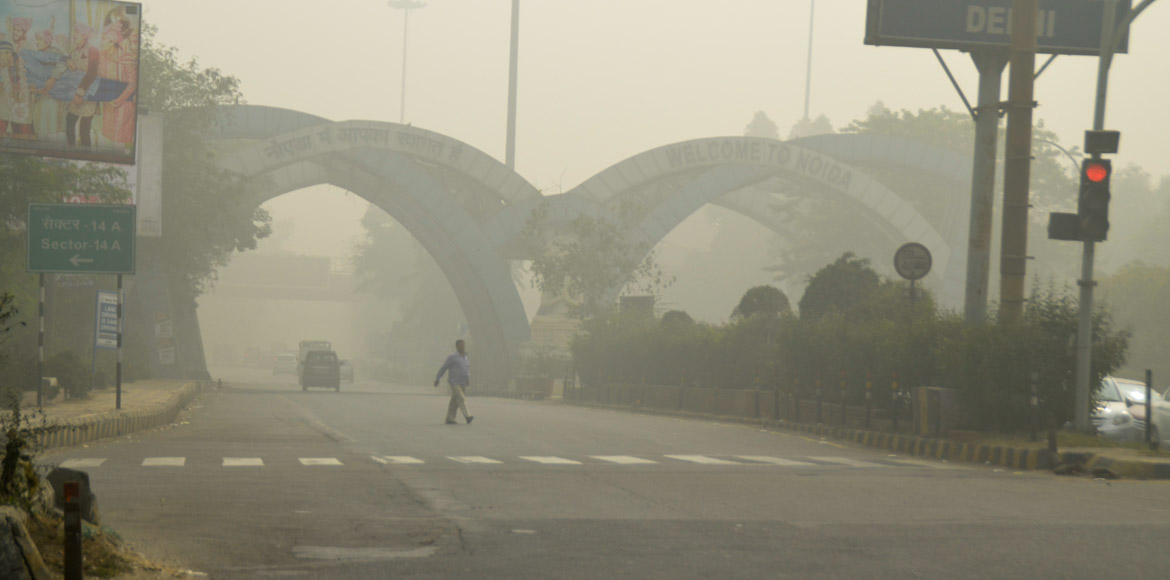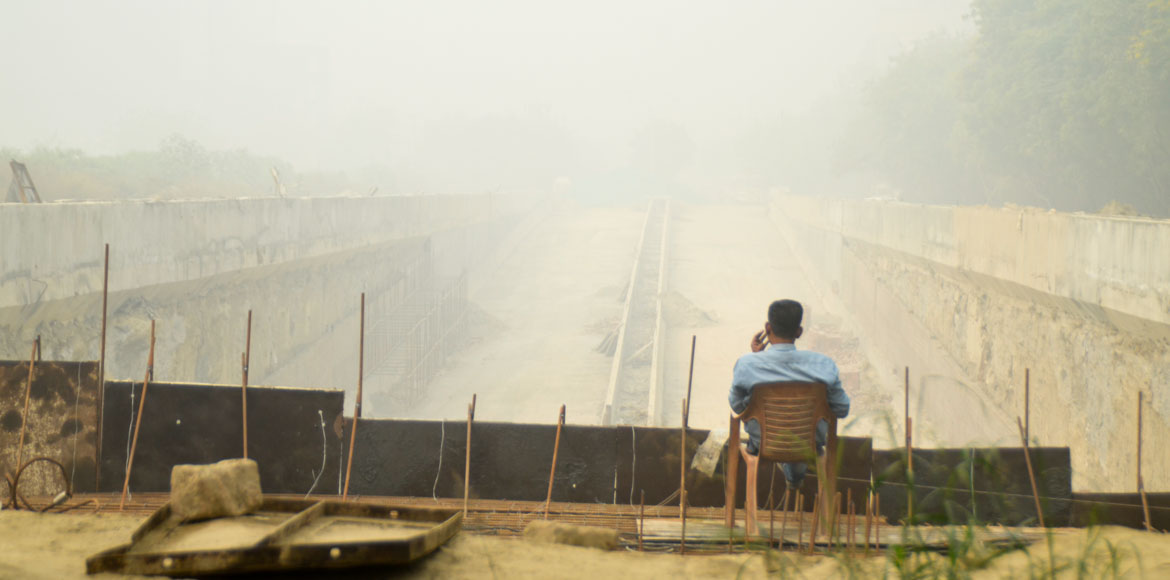Residents of Delhi and NCR use water sprinklers, face masks, air purifiers against the hazard. But for how long?
 Akshardham temple covered in thick dust
Akshardham temple covered in thick dust
Just as residents were about to breathe a sigh of relief, with the smog on its way out, Sunday morning saw the NCR enveloped in a thick haze again.
The smog, combined with pollution from vehicular emission — which includes gases such as carbon monoxide, sulphur dioxide, hydrocarbons and nitrous oxides — can spell doom for the healthiest people.
Dr Nitin Kumar, consultant cadiologist, Venkateshwar Hospital in Dwarka, told City Spidey that given the health risk, people should exercise great caution when outdoors and avoid morning walks if possible. “People should wear masks of N95 to N99 quality, and use air purifiers with hepa filters until the situation in the NCR improves,” Dr Kumar said. People with chronic lung and heart ailments must be extra careful and seek medical help if they feel their breathing is getting affected in any way, he added.

Mayur Vihar Phase I
The air quality in Delhi-NCR remained in the "severe" category for the sixth day in a row.
On Saturday, Delhi registered an average of 403 on the Air Quality Index (AQI), which was significantly lower than 484 on Friday. But according to National Pollution Control Board (NPCB), on Sunday morning it had crossed 500.
Bhure Lal, chairman of Environment Pollution Control Authority (EPCA), confirmed that the AQI has rised by Sunday afternoon. “Saturday afternoon the AQI was marginally lower than the previous day's. But by evening, the weather quality changed and a sharp increase was recorded in air pollution. When the clouds cut off the sun’s rays, the temperatures also went down. Also, with wind flow being low, the pollution is getting worse,” Bhure Lal said.

Near Noida gate
The word from experts is that the entire region is in for some more troublesome days ahead.
If we come to Gurgaon, depleting air quality, just like the rest of the NCR, has MCG and the RWAs concerned. Now, wide awake to the problem that has descended on city, both have swung into action to fight the smog. Schools have been ordered shut in Gurgaon, and children asked not to go for outdoor activities. The city has witnessed a sudden drop in the number of morning walkers and early-morning joggers. The authorities have suggested the use of air purifiers.
The severe depletion in air quality is due to various reasons, but it has been aggravated by the burning of agriculture stubble in areas outside Gurgaon. This has contributed to 50 per cent of the problem, to which pollution from vehicular emissions and construction waste is added.
Civic authorities are at their wits' end to find solutions. In Gurgaon, the fire department has been rushing tenders to sprinkle water on dusty stretches and trees to mitigate the situation.
Use of water is something that resident welfare associations in different areas, including Noida and Delhi, have been trying out too.
Milesh Tandon, president of the Fresco RWA, said, “We have been sprinkling water so particles settle down on the roads and plants. In fact, we have been only using STP water for this purpose.” The RWAs involved in this include Sushant Lok, South City, Nirvana Country and Palam Vihar.
"Just to start with, we as a family are not using our cars for at least two days and will use public transport or carpool. It’ll make some difference, and we cannot wait for the government to act — we need to do something ourselves too," said Ishdeep Singh, working with an MNC in Gurgaon.
Face masks have become a common sight across the NCR.
“I had recently got a stock of 10,000 masks and within a week it was all sold,” said Ramesh Pandit, a shopkeeper at the DLF Qutub Plaza shopping complex.

Near the NTPC flyover
In neighbouring Uttar Pradesh, the state pollution control board recorded PM 10 average levels at 671 micrograms/m3 counter, while PM 2.5 average levels were at 441.7 micrograms/m3 counter in Noida.
Visibility in the region that was recorded at 500 m at 8 am fell to 400 m within an hour, at 9 am.
Rajat Verma, a resident of Sector 122, Noida, told City Spidey, “Yesterday it was clear. However, when I woke up this morning, I found smog all across the colony.”

A man sits near an under-construction underpass, enveloped in dust